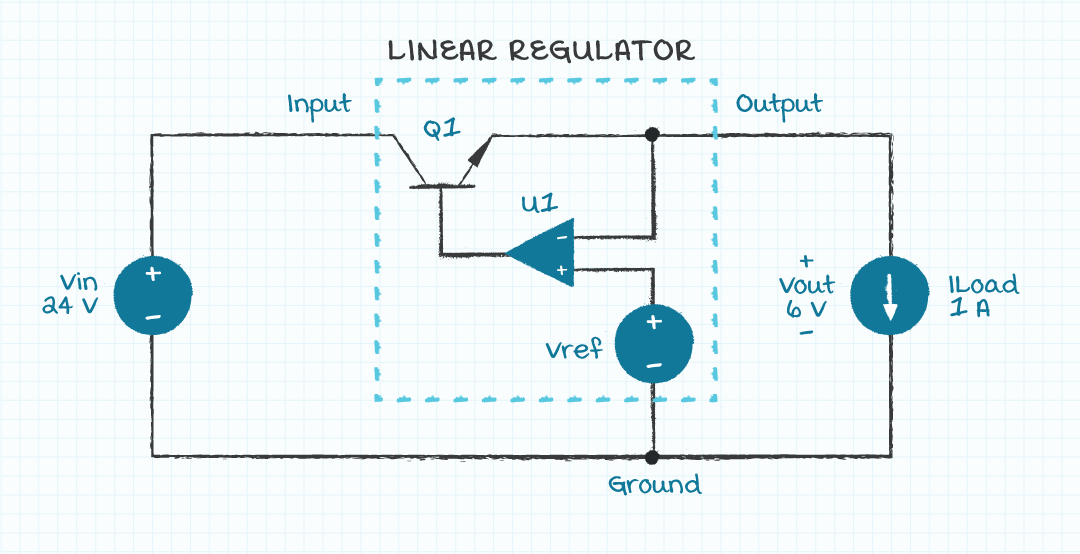7 Schematic of a linear voltage regulator Circuit Diagram Voltage Regulator. A fixed or linear voltage regulator is a device or circuit which is responsible for providing a constant dc output voltage for any changes in input voltage or load conditions. It is the most essential part of electronic devices. It acts as a buffer for protecting the components of the circuit from damage. Here we used a Zener as the reference and the transistor Q1 as a series regulator doing the hard work. R2 provides bias to turn Q1 on and supply a much smaller current through the Zener D2. If Vout is 5V, the base-emitter volt drop of 0.6V would be added to that, so D2 would need to be 5.6V (commonly available), and R2 would now have to supply the collector current/hfe of the transistor (say

The Basic Linear Regulator A linear regulator operates by using a voltage-controlled current source to force a fixed voltage to appear at the regulator output terminal (see Figure 1). The control circuitry must monitor (sense) the output voltage, and adjust the current source (as required by the load) to hold the output voltage at the desired
PDF Linear Regulator Fundamentals Circuit Diagram
Load: The output of the 7805 is connected to a load (represented by a resistor in the circuit) that consumes power. Steps to Design the Voltage Regulator. 1. Select the Input Voltage: Choose a DC voltage source that is higher than the output voltage. The 7805 requires a minimum input voltage of 7V to produce a stable 5V output. For example 78XX linear voltage regulator has 2 V voltage drop (min. input voltage is Vin = 5 + 2 = 7 V DC), as a result you can use 7,5 or 9 V DC power supply. Efficiency calculation. Under consideration that the output current is equal to the input current for a linear regulator then we will get simplified equation: Efficiency = Vout / Vin

to force a fixed voltage to appear at the regulator output terminal. The control circuitry continuously monitors (senses) the output voltage, and adjusts the current source (as required by the load) to hold the output voltage at the desired value. • The design limit of the current source defines the maximum load current the regulator can open-circuit output voltage, and then places that voltage across the load. Thus, the current through the load does not have to come from the original circuit—the load current instead is provided by the op-amp (through its power supply). An application of this then is with our regulator circuit: 0 R L R L I S V LZK V V + = − 10 Z Im A ≈ All linear power supply circuits which are designed to produce a stabilized, constant voltage and current output fundamentally incorporate transistor and zener diode stages for getting the required regulated outputs. These circuit projects using discrete parts can be in the form of of permanently fixed or constant voltage, or stabilized adjustable output voltage.

How to Design a Voltage Regulator Circuit Diagram
%PDF-1.4 %âãÏÓ 3 0 obj > endobj 5 0 obj > endobj 7 0 obj >stream H‰dTkTSW ¾—äÞD As½¨‰&Á T$Ô:ò yÀBÁw•š@êdxJb %¾[ Q´3 ¥VÔ ŽÌ Ë'Z
